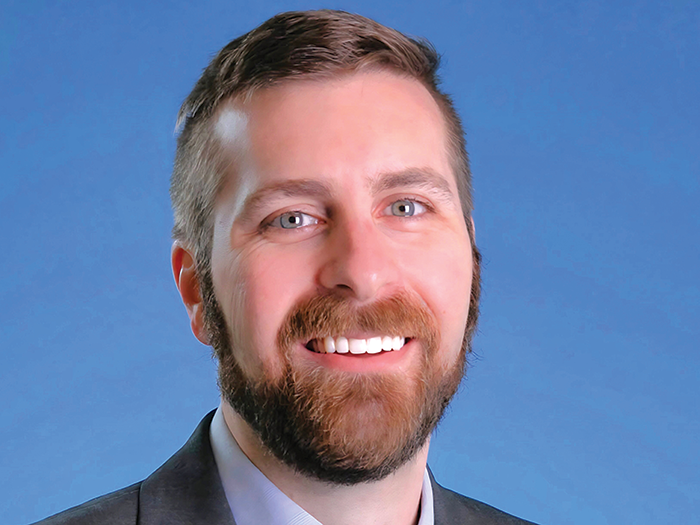Samar Patni on Navigating Public Sector Insurance Challenges in Cyber, D&O, and Abuse Liability

Come see the Stars! As part of our ongoing coverage of the best brokers in the commercial insurance space, Risk & Insurance®, with the sponsorship of Philadelphia Insurance, is expanding its coverage of the Rising Stars, those brokers who represent the next wave of insurance brokering talent.
Look for these expanded profiles on the Risk & Insurance website and in your social media feeds throughout the year.
Samar Patni, SVP, Client Executive, Marsh, and a 2024 Public Sector Power Broker winner shares below.
Risk & Insurance: In which commercial lines are your clients struggling to put together adequate coverage?
Samar Patni: Public sector entities within the education and health care industries are facing challenges in securing adequate coverage in a few key insurance lines due to increasing claims, rising costs and complex risk profiles.
Most clients are under increasing pressure to secure robust cyber liability insurance as they face high risks of data breaches and ransomware attacks. Health care providers, who manage extensive patient data and resident records, are finding it challenging to seek adequate cyber protection amidst a surge in ransomware attacks. Insurers have responded to the heightened risk with higher premiums, stricter underwriting and robust cyber controls.
For public sector clients, D&O and E&O coverage is critical yet increasingly difficult to secure due to rising litigation and regulatory scrutiny. Educational institutions are facing potential claims related to governance issues, employment practices and fiduciary duties. With a growing number of lawsuits against executives and administrators, insurers have tightened underwriting standards and imposed restrictive terms, thus complicating the task of obtaining adequate limits and coverage.
Lastly, abuse and sexual misconduct liability is an essential but challenging line of coverage for public entity clients. Schools, universities, hospitals and long-term care facilities need strong protection against claims related to abuse or misconduct involving students, patients or staff. Due to the severity and sensitivity of these claims, insurers require stringent policies and preventative protocols, often resulting in high premiums, restrictive limits, and specific exclusions.
For many organizations, implementing comprehensive safeguarding, administrative procedures and reporting policies has become essential to qualify for adequate coverage.
R&I: On the claims side, what’s working well and what’s not?
SP: Most public sector clients are seeing positive outcomes from proactive risk and claims management systems. Risk control measures, such as safety training, security protocols, and loss prevention initiatives, are helping reduce the frequency and severity of claims.
Client-centric systems have streamlined claims management process, enabling faster submission, tracking, and resolution of claims. Additionally, strong communication with insurers and dedicated claims advocacy has led to clearer expectations and more efficient claims processing.
With that said, public sector clients in education and health care industry are facing additional challenges with high deductibles, legacy abuse claims, and rising defense costs. Our understanding is that increased deductibles mean organizations are covering more of the initial claim expenses, which strains budgets already limited by rising premiums.
Legacy abuse claims often require extensive historical documentation, yet retrieving archived files is time-consuming and sometimes incomplete, further delaying the claims process. Additionally, the rising costs associated with legal defense for complex claims — particularly those involving abuse or liability — add significant financial and administrative burdens, making it even harder for public sector clients to manage these claims effectively.
R&I: Where do you see generative artificial intelligence making a difference in your team’s work?
SP: Artificial intelligence (AI) has played a pivotal role in transforming insurance broking and client servicing by enhancing efficiency, accuracy, and customization. AI-powered tools have automated routine tasks, such as policy comparisons and renewal process.
For client servicing, AI tools have streamlined claims processing thus improving response times and client satisfaction. AI has enhanced claims analysis and negotiation with insurers by quickly processing large volumes of data to identify patterns, trends, and potential risks. These tools are assisting to predict future claims trends, streamline workflows, thus mitigating similar claims.
For negotiations, AI tools have been providing brokers with valuable insights from historical claims data and industry benchmarks, allowing us to present data-driven submission to insurers. These have greatly assisted in securing better terms, lower premiums, and more favorable coverage limits by enabling us to negotiate from a position of strength, backed by predictive analytics and in-depth data insights.
R&I: What advice would you give to a younger person that is seeking to break into this industry?
SP: To succeed in insurance and primarily client servicing, I believe focus should be on building strong relationships and trust with clients.
Firstly, developing a deep understanding of risk profile and identifying specific risk and insurance needs of your clients is key. Being proactive in communication is most important — regularly checking in with clients, answering their questions promptly, providing them with unique risk oriented solutions and always being transparent about coverage options and potential risks goes a long way along in building the trust and confidence with clients.
Building trust requires consistency and follow-through, so always meet your promises and be reliable. With changing times, we should embrace technology and automation to streamline processes, but focus on personal touch is critical in client servicing.
Lastly, stay curious, keep learning, and adapt to industry changes to stay ahead in an evolving market. &










